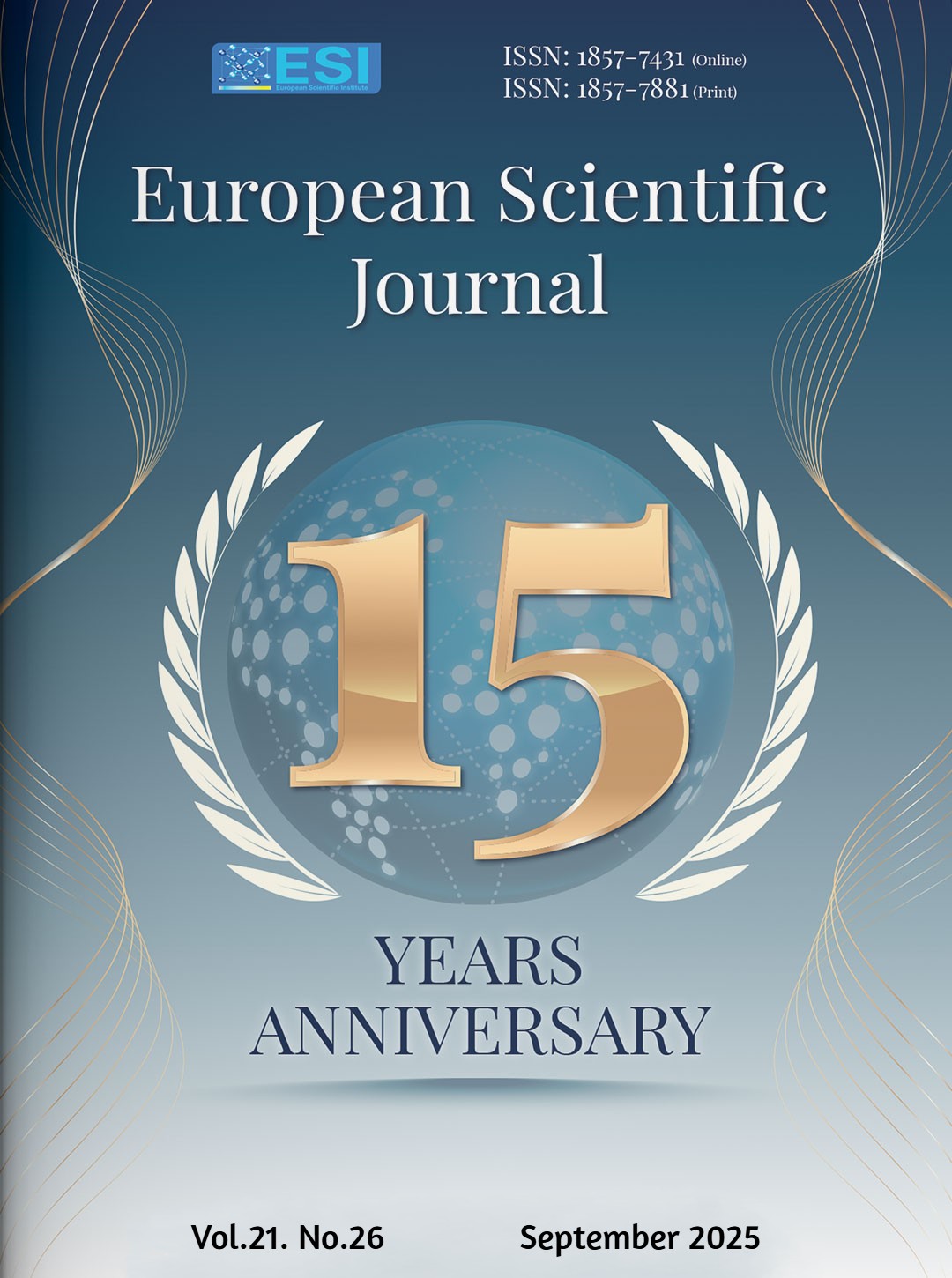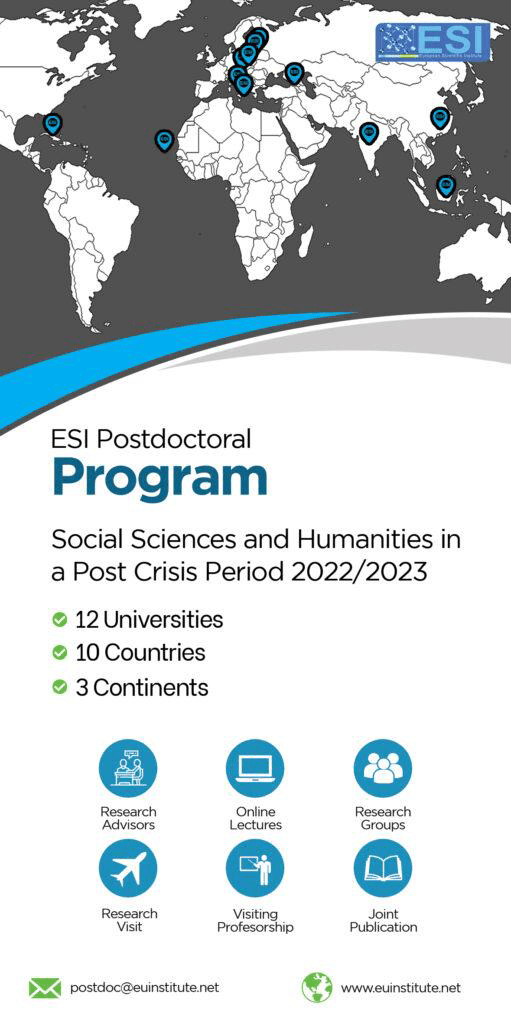Factors of PONASI Ecological Complex Resource Degradation
Abstract
PONASI is an ecological complex which is located in the southern part of Burkina Faso. It abounds with fauna and floristic species. But these resources are in a phase of degradation. The aim of this study is to analyze the main factors contributing to the degradation of the PONASI ecological complex. In order to assess the degradation factors, a systematic approach was used. It is an approach that takes into account the various phenomena responsible for degradation and the interactions. Data collection techniques focused on documentary research, interviews, field surveys, the use of the snowball sampling method, and the processing of some climatic parameters. For this research, a total of twelve (12) villages were surveyed. The results showed that anthropogenic and climatic factors contribute to the degradation of the resources of the PONASI ecological complex. The anthropogenic factors consist of vegetation fires, wood cutting, grazing, and picking immature fruit, and agricultural encroachment. These factors are exacerbated by the limits of governance which result in a lack of legal texts' application, a weak appropriation of the decentralization policy by the local authorities. The results of this study have demonstrated that there are a multitude of factors that contribute to the degradation of the PONASI ecological complex. It is urgent to take the necessary measures to reverse this trend of degradation.
Downloads
Metrics
PlumX Statistics
References
2. Bagnouls, F. et Gaussen, H. (1957). "Les climats biologiques et leur classification". Annales de géographie Mai – juin. pp :193-220.
3. Bernard S. (2010). Le changement climatique : conséquences pour les végétaux, Quaderni Hiver 2009-2010. volume 7. http://journals.openedition.org/quaderni/525. DOI : https: // doi.org/10.4000/quaderni. 525
4. Bouché P. (2005). Inventaire aérien des populations de grande faune dans les sites du PAGEN : Forêt Classée et Réserve Partielle de Faune de Comoé-Léraba ; Forêt Classées de Boulon et de Koflandé ; Réserve de la Biosphère de la Mare aux Hippopotames ; Parc National Kaboré Tambi. Rapport définitif. 80 p. Ministère de l’Environnement et du Cadre de Vie- Projet de Partenariat pour l’Amélioration de la Gestion des Ecosystèmes Naturels-(PAGEN).
5. Bouko B. S., Sinsin B., Soulé B.G. (2007). Effets de la dynamique d’occupation du sol sur la structure et la diversité floristique des forêts claires et savanes au Bénin. In TROPICULTURA, 2007. Tome 25 (4), pp 221-227.
6. Brun L. E., Sinasson G. Azihou F. A., Gibigaye M., Tente B. A. H. (2020). Perceptions des facteurs déterminants de dégradation de la flore des zones humides dans la commune d’Allada, Sud – Bénin, Afrique SCIENCE, 2020. 16(4) - ISSN 1813-548X, http://www.afriquescience.net. pp 67-52
7. Deshaies M-E. (2014). Expérimentation d’une nouvelle approche de conservation : L’aire protégée polyvalente et le rôle d’un comité d’experts. Mémoire de Maîtrise en sciences forestières Maître ès sciences (M.Sc.). Université LAVAL- Québec, Canada. 81 p + Annexes.
8. Dipama J-M. (2009). Les grands épisodes de sécheresse et leurs implications écologiques au Burkina Faso de 1970 à 2000. In Cahiers du CERLESHS : Lettres, Sciences Humaines et Sociales. Ouagadougou (Burkina Faso), 2009. Tome XXIV (34), pp 31-48. http://www.cerleshs.univ-ouaga.bf
9. Dipama J-M. (2011). Approche participative et gouvernance locale des ressources forestières dans la forêt classée de Tuy : Atouts et contraintes. In Cahiers du CERLESHS : Lettres, Sciences Humaines et Sociales. Ouagadougou (Burkina Faso), (2011), Octobre 2011. Tome XXVI (40), http://www.cerleshs.univ-ouaga.bf Université de Ouagadougou pp : 1-17.
10. Dipama J-M. (2014). Approche spatiale du phénomène du réchauffement climatique à l’échelle du Burkina Faso et perception des populations. In LACEEDE : Laboratoire Pierre PAGNEY Climat, Eau, Ecosystème et Développement, Climat et Développement. Cotonou (Bénin), Juin 2014. Volume n°16, pp. 36-49.
11. Dipama J-M. (2016). Changement climatique et agriculture durable au Burkina Faso : Stratégies de résilience basées sur les savoirs locaux. Burkina Faso. Recherche pour des futurs résilients au climat. PRESA/IED. 36 p.
12. Dipama J-M., Vissin W. E., Hedible S., Boko M., (2011). Analyse des stratégies des pratiques agricoles face aux changements climatiques dans la Kompienga (Burkina Faso) et le Mekrou (Benin). In Annales de l’Université de Ouagadougou. Ouagadougou (Burkina Faso), Décembre 2011. Série A, vol. 13, pp : 51-74.
13. Geist, H. J. and Lambin, E.F. (2002). Proximate Causes and Underlying Driving Forces of Tropical Deforestation. BioScience, 2002. 52(2). pp :143-150.
14. Kaboré O., Dipama J-M. (2014). Les déterminants socio-économiques de la dégradation des ressources naturelles dans le bassin versant de la Kompienga (Burkina Faso). In Annales de l’Université de Ouagadougou. Décembre 2014. Série A, Volume 019, pp. 147-167.
15. Kaboré O., Ouedraogo L., Ouedraogo B., Dipama J-M., DA E. D. (2015). Analyse des facteurs d’évolution de l’utilisation des terres dans le bassin versant de la Kompienga (Burkina Faso). In Revue scientifique semestrielle Territoires, Sociétés et Environnement, Presses Universitaires de ZINDER, Niger, juillet 2015. Volume n°005, pp. 61-74.
16. Karambiri B., L., C., N. (2017). Variabilité climatique et gestion intégrée des ressources en eau dans le bassin-versant du SOUROU au Burkina Faso. Thèse de Doctorat unique de Géographie, Gestion des Ressources Naturelles : Université Professeur Joseph KI-ZERBO. 215 p. + annexes.
17. Li G., Fang C., Watson J. E. M., Sun S., Qi W., Wang Z., Liu J. (2024). Mixed effectiveness of global protected areas in resisting habitat loss. Nature Communications, 2024. 15:8389. https://doi.org/10.1038/s41467-024-52693-9.
18. Mchedluri T., Koptonashvili L., khokhobashvili T. (2024). Degradation processes caused by the impact of anthropogenic factors on the ecosystem of tusheti protected areas. Web of Scientists and Scholars : Journal of Multidisciplinary Research, 2024. Volume 2, Issue 1, January, 2024 ISSN (E): 2938-3811 pp 15-21. Webofjournals.com/index.php/12
19. MECV (2005). Politique Nationale en matière d’environnement. 30 p.
20. MECV, (2007). Situation des forêts classées du Burkina Faso et plan de réhabilitation Burkina Faso. 43 pages.
21. MECV-PAGEN (2006). Plan d'aménagement et de gestion participatif du Parc National de Pô dit Kaboré Tambi (PNKT). 89 pages + annexes.
22. MEEVCC (2020). Tableau de bord de l’Environnement 2018. Burkina Faso. 35 p.
23. Mengistu A., Woldetsedik M. (2018). Proximate causes and underlying driving forces of land cover change in southwest Ethiopia. Journal of Sustainable Development in Africa, 2018. Volume 20 (1) ISSN: 1520-5509. pp 232-244.
24. NatuDev (2018). Rapport de l’inventaire de la flore ligneuse et de la grande faune mammalienne diurne du corridor situe entre le Parc National de Pô Dit « Kabore Tambi » et la Forêt Classée et Ranch de Gibier de Nazinga. 70 p.
25. Odum, P. (2024). Land Use and Forest Dynamics in the Context of Redd + : Pathway to Sustainable Environmental Management. Open Journal of Forestry,2024. Volume 14, https://doi.org/10.4236/ojf.2024.141008. pp : 117-126.
26. Ouédraogo L. (2012). Gestion de l’eau et adaptation des populations au changement climatique dans le bassin versant de YAKOUTA (sahel du Burkina Faso). Thèse de doctorat de Géographie : Université ABDOU MOUMOUNI. Niger. 231 p. + annexes.
27. Siry, J. P., McGinley, K., Cubbage, F. W., & Bettinger, P. (2015). Forest Tenure and Sustainable Forest Management. Open Journal of Forestry, 2015. Volume 5, http://dx.doi.org/10.4236/ojf.2015.55046. pp 526-545.
28. Tchatchou B. , Sonwa D J., Ifo S., and Tiani A. M. (2015). Deforestation and forest degradation in the Congo Basin. Center for International Forestry Research (2015). Report Subtitle: State of knowledge, current causes and perspectives https://www.jstor.org/stable/resrep02255.8
Copyright (c) 2025 Wend-kuni Dina Antine Zougmore, Oumar Kabore, Jean-Marie Dipama

This work is licensed under a Creative Commons Attribution 4.0 International License.








